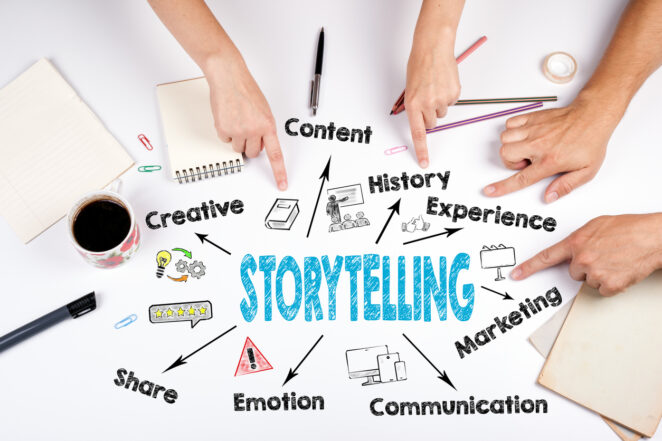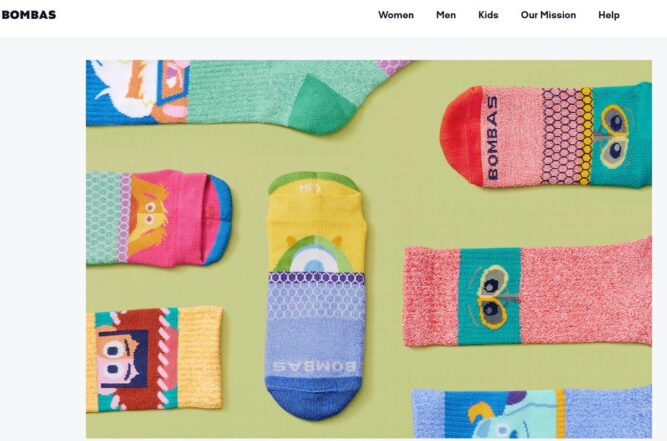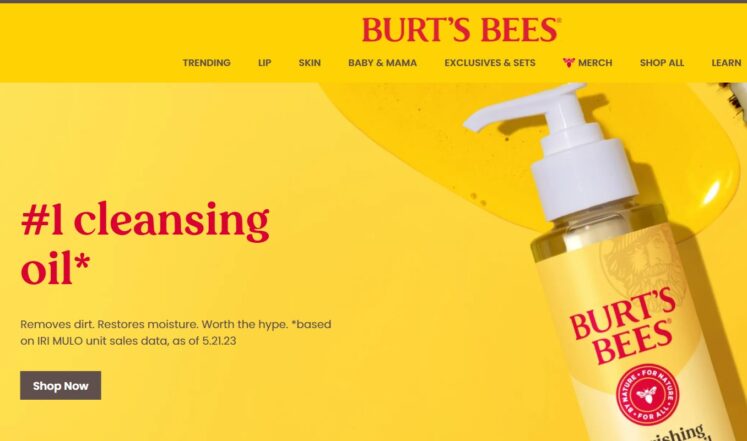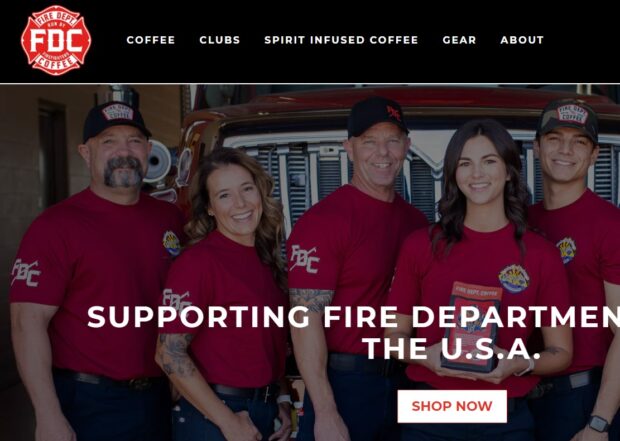Brand Storytelling: What It Is, Best Practices, & Examples
Willy Wood
In today’s ever-changing digital landscape, where businesses are all fighting fiercely for prospects’ attention, the ability to use storytelling to sell yourself to your ideal customers is a superpower you need to cultivate.
But it’s not just about telling random stories; it’s about the craft of weaving narratives that resonate with your audience and help your business grow.
This is the art of brand storytelling.
In this post, we’ll dive into the world of brand storytelling—what it is, why it’s important for businesses to master, and the key elements that you can use to make your business stand out from the crowd.
So, let’s jump in and explore how you can add this superpower to your business-building skill set.

What is Brand Storytelling?
Put simply, brand storytelling is telling stories that make people care about your brand.
These stories can be the backstory (origin story) of your business, they can be stories about what you do and why you do it, they can be stories about why you created your products or why they’re so great, or they can be the stories of your customers (case studies and testimonials).
But why stories? Why not just tell people in a straight-forward way about your products and services and their features and benefits?
Think about it this way: You’re walking through a room full of people who are all talking to you as you pass by. All of them are telling you how great they and their products are—all except one.
As you walk by this person, they start telling you a story about one of their customers, about how difficult their life was before trying the speaker’s product, the transformation they went through when they did so, and how wonderful their life is today.
There’s a lot of rich, specific imagery in the story that allows you to picture the scene clearly in your mind’s eye. And beyond just giving the facts of what happened, the story also tugs at your heartstrings. You find yourself identifying with the person in the story and reveling in their success.
So, out of all of the people talking to you in that room, who are you going to gravitate toward? Who are you going to stop and listen to? And who are you ultimately going to buy from?
Exactly. That’s the power of a good story.
Why is Brand Storytelling Important?
Brand storytelling is such a powerful tactic for growing your business for three primary reasons: stories are relatable, memorable, and emotional.
- Relatable—If you’re like most businesses, you’ve taken the time to get to know your ideal customers in depth. You’ve likely even created a customer avatar that represents the group of people you want to serve.
But your ideal customer avatar is just one half of the equation. You also need to make sure that all of your messaging reflects your company’s values.
When your ideal customers see that your company’s values reflect their own values, that’s a match made in marketing heaven. And the very best way to communicate your values in a powerful way that resonates with your ideal customers is through your brand story.
- Memorable—Psychologist Jerome Brunner found that people are 22 times more likely to remember details when that information is embedded in stories rather than just presented as facts and figures in informational text.
This means that information such as product specs, features, and benefits will be retained much more easily if they’re embedded in a narrative structure, such as case studies and testimonials.
- Emotional—A study published in the Harvard Business Review found that loyalty to a brand is heightened by emotional connections.
And probably the best way to connect with your ideal customers emotionally is by telling a story. Your prospects connect emotionally to the story, and because your company was the one who shared that touching story with them, they also connect by association with your brand.
No other marketing approach can match story’s combination of relatability, mnemonic stickiness, and emotional connection. It’s a powerful tool to use especially in specific niches, like in the case of Secret Nature CBD. And that’s why selling through story is so effective.

What are the Key Elements of Powerful Brand Storytelling?
Now that you know how powerful stories can be for building brand awareness and growing your business, let’s break it down and identify the key elements of effective brand storytelling so you can do it well.
Draws on Narrative Techniques
Think about all your favorite stories—the mysteries that kept you guessing right up to the last page, the romances that had you cheering for the couple to make it in face of all the odds, the science fiction story that expanded your conception of what the future might look like. You probably even have favorites that you’ve read or watched multiple times over the years, even though you already know how they turn out.
What’s so captivating about these stories? Why do we engage with them so deeply that we can’t put the book down or can’t turn the movie off?
Well, it’s not magic (though the results can be magical). There are actually tried-and-true techniques that all great writers use to grab your attention and touch your emotions.
These techniques include:
- Settings that come alive with detailed description, using the senses to paint vivid word pictures;
- Characters who display both heroic qualities and human foibles, creating a realistic depth that makes them seem like real people;
- Conflict—good vs. evil, rich vs. poor, man vs. nature;
- Surprising Plot Twists that keep you engaged because you can’t be sure what’s going to happen next;
- Climax and Resolution—When the story builds to that inevitable event when the outcome is decided and the story is wrapped up in a neat little package.
And when it comes to using stories to build your brand, you want to use all of these techniques in your copy, as well.
Sure, you’re trying to sell a product or service, but if you’re doing so through a story, use all the techniques in the writer’s toolbox to make that story riveting. The better the story, the stronger your branding will be.
And don’t just limit yourself to text. You’ll also want to incorporate these storytelling staples when you’re writing video scripts for video sales letters (VSLs), YouTube videos, and the videos inside your online courses.
To amplify your brand’s narrative and engage your audience on a deeper level, it’s also worthwhile to explore how to start a blog that aligns with your compelling brand story.
Reflects Your Brand’s Purpose and Values
Your company (and your brand) has a mission and values that make it unique. Whenever you’re using storytelling in your marketing messages, make sure you’re not just talking about a product or service, but that your story also highlights your company’s values.
It’s like showing your brand’s heart to the world. When your stories reflect your purpose, your ideal customers will resonate with that purpose and feel a deeper connection to your brand. And when that happens, they become so much more than just customers; they become raving fans and brand evangelists.
Is Always Authentic to Your Brand
This element goes hand in hand with the previous one. When the stories you tell reflect your mission and values, you will write from a place of authenticity. And authenticity is the cornerstone of trust.
When your prospects read your brand’s story, they can tell if you’re faking it or if you’re being authentic. So be true to who you are.
One word of caution, though. Being true and authentic isn’t about perfection. It’s about embracing your unique identity, and that includes your imperfections and quirks as well as your strengths. It’s about being real in a world that craves the genuine.
Aligns With Your Business Goals
We mentioned some elements of good stories previously. But remember, the goal isn’t just to write good stories. Every story you write has to have a point, a goal. And that goal is to advance your business in some way.
Your storytelling should therefore be purposeful, leading your audience to take a specific desired action, whether that’s to download your lead magnet, subscribe to your membership program, or buy a product.
So, think first about your business goal, then ask yourself what stories you know or what customer stories you’ve collected that will help in achieving that goal.
Sometimes you don’t have a personal story or customer story to use. That’s OK. You can still use storytelling in such situations. All you have to do is create a fictional story that makes the point. When well written, these can be just as effective as true stories.
The Story is Delivered Consistently
Imagine if your favorite superhero changed their costume every day. That would be confusing, right?
Well, the same goes for your brand story. You need to send a consistent message through all the stories you use—on your website, in social media, in your blog content, and in your marketing materials.
There’s an old marketing adage that says, “A confused mind never buys.” So don’t confuse your prospects. Make sure a consistent big picture message runs through all the stories you use to engage your prospects. Doing so helps your prospects learn to trust you.
Includes Your Audience
We talked about your ideal customer avatar previously, so you already know that the stories you tell need to speak directly to your avatar and be relatable.
Your stories must incorporate your audience’s aspirations and speak to their pain points. But that’s just for starters. To really hook your audience, you have to make them the hero of all your stories.
This means that you need to show your audience (vicariously through the main character in your story) facing their challenges, seeking a solution (your product or service, of course), and emerging triumphant.
In other words, your stories need to show the transformation your audience achieves by using your product.
Inspires Your Audience to Take Action
Your stories need to be more than just engaging and entertaining; they need to make your audience want to do something.
That something could be to opt-in to your email list, share your brand story with their friends, or buy your product. But whatever you want them to do, you have to tell them to do it: “click the button below,” “start your free trial,” “buy now.”
Be concise, be clear, and be direct. Your call to action is the logical ending point of all your marketing stories, so you don’t want all your effort to go to waste because the reader didn’t know what to do at decision time.
Great Brand Storytelling Examples
There are many companies out there, large and small, who do a great job of using brand storytelling in their businesses. And while giving you guidelines about how to go about telling your own brand stories (as we’ve done above) is helpful, one of the best ways to learn how to do something is by emulating someone else who’s already doing it well.
With that in mind, here are three companies that use brand storytelling powerfully to sell their brands and products:

In 2013, Bombas founders Randy Goldberg and David Heath learned that socks were the #1 requested items in homeless shelters. This is because homeless people spend most of their waking hours walking, and their socks wear out quickly.
They had an idea to create a company that would sell good quality socks to the public and then donate one pair of socks to homeless shelters for every one pair bought. From this beginning, the company has expanded to selling underwear and t-shirts (the #2 and #3 most requested items).
They distribute the free clothing items through a Giving Partners Network—3,500 organizations across the U.S. who serve not only homeless people, but also people in rehab centers, transitional living facilities, and kids in foster care and Title I schools.
But Bombas has become a thriving company and national brand not only through their powerful mission and values, but also through the emotional storytelling they do on their website and in their other marketing materials, both in print and in video, as demonstrated on their Our Mission page.
A powerful mission + a powerful story = a great brand.

This company, famous for natural skincare products, began as a result of a serendipitous hitchhiking encounter when Burt Shavitz gave Roxanne Quimby a ride. Both had left the hectic city lifestyle behind to head to backwoods Maine.
The two hit it off, and soon Burt was teaching Roxanne the ins and outs of his business—beekeeping and selling honey by the roadside. In her turn, Roxanne learned how to turn their beeswax into candles and lip balm, and Burt’s Bees was born.
The company does a great job of telling their origin story and clearly stating their values of being a low-impact, environmentally friendly company. For example, their packaging is all recyclable, and they power their facilities with renewable electricity.
These stories resonate with Burt’s Bees’ ideal customers, who are likewise environmentally conscious. Sure, they could get many of the same types of products elsewhere, but why would they, when the Burt’s Bees story resonates so strongly with their own values?

Inspired by the role coffee plays in keeping firefighters and other first responders alert during long shifts, U. S. Navy veteran and former firefighter Luke Schneider founded Fire Department Coffee in 2016. He then teamed up with VP Jason Patton, also a firefighter and paramedic, to run the company. Fire Department Coffee is operated almost entirely by active and retired firefighters.
But there’s much more to Fire Department Coffee than just a good cup of Joe created and sold by firefighters. The company also supports other firefighters and first responders in need through the Fire Department Coffee Foundation, a 501(c)(3) charitable foundation, giving back to those who have been injured, mentally or physically, on the job or who are facing other serious health challenges.
But like Bombas Socks and Burt’s Bees, Fire Department Coffee would just be a good company doing good work if it weren’t for their strong brand storytelling. To get a taste of how they use their origin story and great sense of humor to sell their products, check out the hilarious video on their About page.
These three companies show you how you can use the power of storytelling to touch people’s hearts and minds and create a strong connection between your company and your prospects.
So Grab Your Cape, Brand Storytelling is Here to Save the Day
In the introduction, we called brand storytelling a superpower. And that really is true.
It’s like a secret weapon, and the majority of your competitors are probably either not using it at all or not using it well. Which means you have an opportunity to get a leg up on the competition.
And the great thing is you don’t have to be a big business with a huge marketing budget to tell a great brand story. With the essentials included in this post and a little work, you can master the art of brand storytelling in no time.
Really, it all just comes down to connecting with people on a deeper level, and when you do that, you’ll see your business grow like never before. So, go ahead and start telling your brand story and watch the magic happen!
Elevate Your Copywriting Game!
Discover winning strategies and insider tips for writing words that sell - from Mirasee’s very own expert copywriting team!